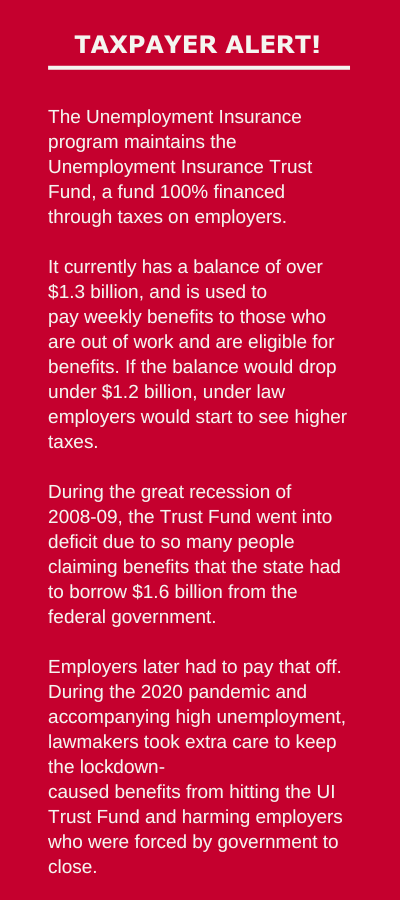Click here for a printable version of our report or read the full version below.
State Agency Fast Facts:
The Department of Workforce Development (DWD) was has been around going back to 1911, when the Bureau of Labor Statistics became the Wisconsin Industrial Commission. Later it was transformed into the Department of Industry, labor and Human Relations (DILHR), before becoming the agency we know today in 1996.
The agency is vast. With over 1,600 employees, the department boasts a biennial budget of over $732 Million. The department regulates important items for workers and employers, such as Unemployment Insurance, Worker’s Compensation, and job training programs and apprenticeships, while also administering a host of employment-related laws, such as Family and Medical Leave, minimum wage, employment discrimination, and more.

Did you know?
Wisconsin was the first state to create a constitutionally valid Worker’s Compensation program in 1911, as well as the first state to create an Unemployment Insurance program in 1932. The first UI check was for $15.00 in 1936. Those programs have since been replicated across the country in every state.
Reform History:
DWD has a long and storied reform history, much of it archived at dwd.wisconsin.gov/dwd/history/.
During his tenure, Gov. Scott Walker made significant reforms to Unemployment Insurance such as enacting drug testing and treatment programs, reducing fraud, and requiring claimants to be looking for work each week to be eligible for benefits. He also enacted changes to the job training side of DWD, creating grant programs like Fast Forward to assist with worker skills training and launching the Job Center of Wisconsin to help match job seekers with available jobs.
Gov. Evers’ DWD reform efforts have largely been focused on trying to reverse what Gov. Walker signed.
Keep an Eye on…
During the pandemic, DWD was unprepared for the record number of unemployment claims, which created massive backlogs and delays in benefits being delivered. In the first week of Evers’ Safer at Home order in 2020, DWD’s unemployment line received 1.5 million attempted calls. Since then, policymakers have focused on upgrading DWD and making sure it is prepared for the next crisis event. Only time will tell if the changes are enough or if additional reforms are needed.
This month, there are typically over 120,000 active job applicants seeking work, even while employers throughout Wisconsin are seeking workers and shuttering because of a lack of workers. Will policymakers be able to bridge the divide between those seeking work and employers?
Close Call:
In his budget proposals, Gov. Evers has proposed repealing many employment law reforms originally signed by Gov. Walker, such as requiring UI claimants to search for work 4 times each week and pass drug tests and treatment to make sure they are employable. He’s also called for implementing a higher minimum wage, reinstating prevailing wage laws, repealing Right to Work, and dramatically expanding FMLA. These items were not approved by the Legislature.

IRG Wants to Know:
If you were in charge for a day, what reforms would you make to the department? Email Alex Ignatowski, IRG’s Director of State Budget and Government Reform, at [email protected].

